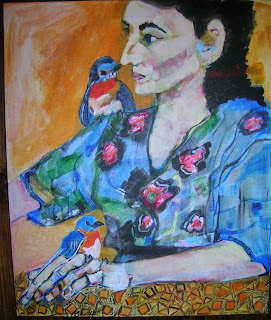Art Is Hard to See Through the Clutter of Dollar Signs

2013 Estate of Francis Bacon/Artists Rights Society (ARS), New York/DACS, London
Francis Bacon’s “Three Studies of Lucian Freud” sold for $142 million.
Published: November 13, 2013
As our troubled age becomes ever more gilded, art auction prices soar
with bone-numbing regularity. A new high-water mark was reached on
Tuesday, when a 1969 triptych by the British painter Francis Bacon sold
for $142 million while the Christie’s auction in which it was featured
took in $692 million. Both figures exceeded recent highs: One arrived in
spring 2012, when Edvard Munch’s “The Scream” sold for $119 million at
Sotheby’s; the other came last spring, when a Christie’s auction total
reached $492 million. It seems that people really, really like art these
days.
A sortable calendar of noteworthy cultural events in the New York region, selected by Times critics.
Auctions have become the leading indicator of ultra-conspicuous
consumption, pieces of public, male-dominated theater in which
collectors, art dealers and auction houses flex their monetary clout,
mostly for one another. The spectacle of watching these privileged few
(mostly hedge fund managers and investment-hungry consortiums, it seems)
tossing around huge amounts of money has become a rarefied spectator
sport. These events are painful to watch yet impossible to ignore and
deeply alienating if you actually love art for its own sake.
More than ever, the glittery auction-house/blue-chip gallery sphere is
spinning out of control far above the regular workaday sphere where
artists, dealers and everyone else struggle to get by. It is a kind of
fiction that has almost nothing to do with anything real — not new art,
museums or historical importance. It is becoming almost as irrelevant as
the work, reputation and market of the kitsch painter Thomas Kinkade.
Some have tried to put things into perspective, lamenting that the Bacon
price almost equaled the $154 million that President Obama requested
for the National Endowment for the Arts for fiscal year 2013 — and more
than the $138 million that the endowment actually received, with cuts.
Others have pointed out that the price would have paid, twice, for the
renovated Queens Museum, which cost a modest $69 million. It has been
noted once more that such figures make it impossible to see the art for
the money, that works costing this much are, at least temporarily,
damaged goods.
But here’s another perspective. Prices for postwar art began to rise in
1977, when the Whitney Museum of American Art paid $1 million for
Jasper Johns’s “Three Flags.” The art world was shocked. Even adjusted
for inflation, the $1 million Johns painting would cost roughly $3.85
million in today’s dollars. Now, this would seem a drop in the bucket.
And the system seems greased to go even higher. In a postsale news
conference on Wednesday, Brett Gorvy, worldwide head of postwar and
contemporary art at Christie’s, seemed to be in gung-ho mode. “This
isn’t a bubble,” he said. “It’s the beginning of something new.”
Yet it seems obvious that the Bacon — three portraits of the artist’s
friend, the British painter Lucian Freud — is a special case and a
guaranteed money magnet. It is a portrait of one of Britain’s two most
famous modern artists painted by the other one, both of whom led
flamboyant and well-documented lives. More skeptically, the triptych,
“Three Studies of Lucian Freud,” might also be termed a portrait of a
middlebrow artist by another middlebrow artist. Yes, the work is
beautifully painted with a fetching yellow background, yet if its
subject were someone else, or if it simply had an unfamiliar name in its
title, it probably would have gone for quite a bit less.
In the meantime, it helps to remember that today most people look at Mr.
Johns’s “Three Flags” at the Whitney without seeing a million dollar
signs. It may be hard to look at this Bacon without thinking of its
extraordinary price. But since the buyer is currently a mystery, it’s
anyone’s guess whether we will see it again anytime soon.
This article has been revised to reflect the following correction:
Correction: November 14, 2013
An
earlier version of this article misidentified the auction house where
“The Scream” by Edvard Munch sold for $119 million in the spring of
2012. It is Sotheby’s, not Christie’s.

























